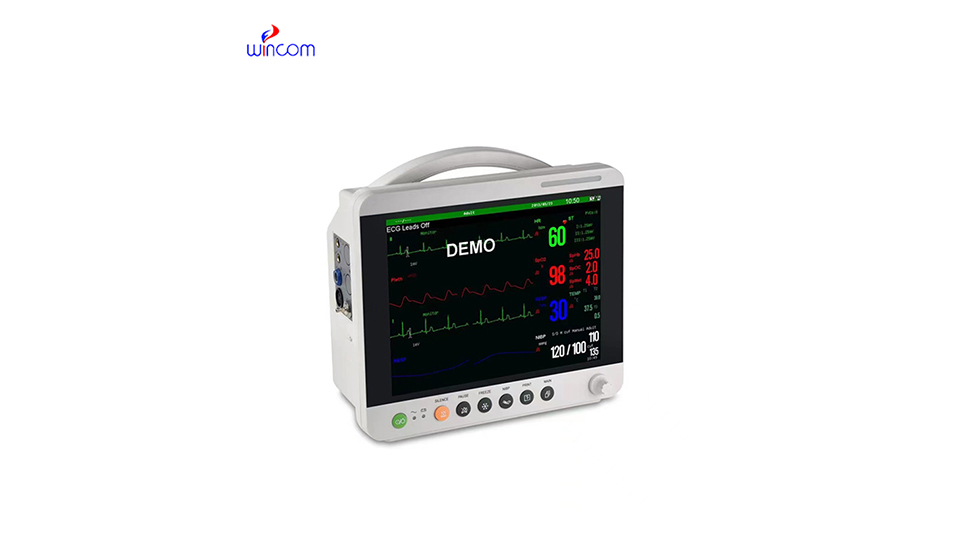Patient monitor is a type of medical equipment used to monitor heart function and electrical activity. Heart monitoring instruments can always pay attention to the patient’s heart condition, mainly including heart rate, heart rhythm, blood pressure and other data.
1. Heart rate: refers to the number of times the heart beats per minute and is one of the most intuitive data on heart monitoring instruments. The heart rate in normal adults ranges from 60 to 100 beats per minute. If the heart rate is higher than 100 beats per minute, it is called tachycardia. Physical factors such as exercise, emotional excitement, fever, anemia, or pathological conditions such as heart disease and hyperthyroidism can all cause tachycardia. When the heart rate is lower than 60 beats per minute, it is bradycardia, which is common in athletes and sleeping, and may also be caused by diseases such as heart block.
2. Heart rhythm: It reflects whether the rhythm of the heart’s beating is regular. Normal rhythm is sinus rhythm, which is displayed as a regular waveform on the monitor. Once a premature beat occurs, the waveform will suddenly appear in advance, and the shape is different from the normal waveform. Premature beats can be divided into atrial premature beats, ventricular premature beats, etc. Occasional premature beats may also occur in healthy people, mostly related to factors such as fatigue and alcohol consumption; however, frequent premature beats may indicate a disease in the heart. Atrial fibrillation is also a common rhythm abnormality. On the monitor, P waves disappear and are replaced by f waves of different sizes and shapes. The heart rhythm is absolutely irregular. Atrial fibrillation increases the risk of thrombosis, which can lead to serious consequences such as stroke.
3. Blood pressure: Including systolic blood pressure (high pressure) and diastolic blood pressure (low pressure). Systolic blood pressure represents the pressure of blood on the blood vessel wall during contraction, and the normal range is generally 90- 140mmHg; diastolic blood pressure is the pressure experienced by the blood vessel wall during diastolic, and the normal range is 60- 90mmHg. Excessive blood pressure, that is, systolic blood pressure ≥140mmHg and/or diastolic blood pressure ≥90mmHg, is a manifestation of hypertension. Long-term hypertension can damage important organs such as the heart, blood vessels, and kidneys. Low blood pressure, with systolic blood pressure <90mmHg and/or diastolic blood pressure <60mmHg, may lead to dizziness, fatigue, and even shock. It is common in conditions such as blood loss, dehydration, and severe infection.
4. Blood oxygen saturation: refers to the degree of oxygen binding to hemoglobin in the blood, which should normally be between 95% and 100%. When the blood oxygen saturation is lower than 90%, it indicates that the body is hypoxic. Lung diseases such as pneumonia, chronic obstructive pulmonary disease, and cardiac dysfunction may all cause blood oxygen saturation to drop. Continued low oxygen saturation can affect the normal function of various organs in the body, especially the brain and heart, and can be life-threatening in severe cases.
Understanding the data on heart monitoring instruments can give you a preliminary understanding of heart health. However, it should be noted that the interpretation of data requires professional knowledge. If abnormal data is found, the doctor should be notified in time for accurate judgment and processing.
Precautions for using patient monitor
During the use of monitoring instruments, patients should try to avoid strenuous exercise and large limb movements to prevent electrode pads from shifting or falling off, and at the same time reduce interference with ECG signals, blood pressure measurement and other data. In addition, stay away from strong magnetic field environments, such as nuclear magnetic resonance equipment, large motors, etc., because magnetic field interference may cause abnormal fluctuations in monitoring instrument data and affect the doctor’s judgment of the condition.
Once abnormalities are found in the monitoring instrument data, such as too fast or too slow heart rate, too high or too low blood pressure, significant drop in blood oxygen saturation, etc., immediately check whether the instrument connection is normal and whether the patient’s physical condition has changed. If the instrument failure is eliminated, the patient needs to be further examined and evaluated quickly.

